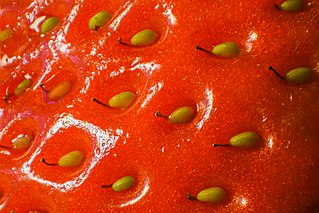
Cirsium fontinale, the fountain thistle, is a flowering perennial herb in the sunflower family. It is endemic to California. The genus Cirsium is commonly known as the "thistle" genus, Cirsium being the Greek word for 'thistle.'

Cirsium arizonicum, the Arizona thistle, is a North American species of thistle in the sunflower family, native to the southwestern United States and northwestern Mexico. It has been found in Arizona, southeastern California, New Mexico, Nevada, Colorado, Utah, Sonora, and northwestern Chihuahua.

Cirsium occidentale, with the common name cobweb thistleor cobwebby thistle, is a North American species of thistle in the sunflower family.

Eryngium aristulatum, known by the common names California eryngo and Jepson's button celery, is a species of flowering plant in the carrot family.
Isocoma arguta is a rare species of flowering plant in the daisy family known by the common name Carquinez goldenbush. It has been found only in Solano and Contra Costa Counties in California, where it grows in the Sacramento-San Joaquin River Delta. It is a resident of Suisun Marsh. It thrives on alkali flats and other mineral-rich soils.
Arctostaphylos luciana is a species of manzanita known by the common name Santa Lucia manzanita, is endemic to California. .
Arctostaphylos pilosula is a species of manzanita, known by the common names La Panza manzanita and Santa Margarita manzanita, that is endemic to California.

Calochortus pulchellus is a rare species of flowering plant in the lily family known by the common name Mt. Diablo fairy-lantern or Mount Diablo globelily.

Cirsium brevistylum is a species of thistle known by the common names Indian thistle and clustered thistle. It is native to western North America having been found in southwestern British Columbia, Washington, Oregon, Idaho, Montana, and California.
Cirsium ciliolatum is a species of thistle known by the common name Ashland thistle. It is endemic to the Klamath Mountains, where it is known from only a few occurrences in Jackson and Josephine Counties in Oregon, as well as neighboring Humboldt and Siskiyou Counties in California. It is related to Cirsium undulatum and may be more accurately described as a variety of that species.
Cirsium crassicaule is a species of thistle known by the common name slough thistle. It is endemic to the San Joaquin Valley of California, where it is known primarily from freshwater wetlands. It has been found in only a few locations in Kern, Kings, and San Joaquin Counties.

Cirsium cymosum is a North American species of thistle known by the common name peregrine thistle. It is native to the western United States, where it has been found in California, Oregon, Nevada, Utah, Idaho, Wyoming, and Montana.

Cirsium douglasii is a species of thistle known by the common names Douglas' thistle and California swamp thistle.

Cirsium mohavense is a species of thistle known by the common names virgin thistle and Mojave thistle. It is native to the southwestern United States, where it grows in moist areas in otherwise dry habitat, such as desert springs. It is most common in the Mojave Desert, found also in the southern Great Basin and other nearby regions of California, Nevada, western Arizona, and southwestern Utah.

Cirsium rhothophilum is a rare North American species of thistle known by the common name surf thistle. It is endemic to California, where it is known only from the coastline around the border between San Luis Obispo and Santa Barbara Counties. It grows in sand dunes and coastal scrub near the beach.

Cirsium scariosum is a species of thistle known by the common names meadow thistle, elk thistle and dwarf thistle. It is native to much of western North America from Alberta and British Columbia south to Baja California. There are also isolated populations on the Canadian Atlantic Coast, on the Mingan Archipelago in Québec.

Cirsium undulatum is a species of thistle known by the common names wavyleaf thistle and gray thistle. It is native to much of central and western North America from British Columbia east to Manitoba and south as far as the State of Durango in Mexico. It has also been found outside of its native range as an introduced species.

Fritillaria biflora var. ineziana, the Hillsborough chocolate lily, is a species of fritillary endemic to San Mateo County, California. It grows on serpentinite in cismontane woodland and valley and foothill grassland at elevations that range from 295 to 525 feet It is typically found on serpentine soils and it is defined as a "broad endemic" where 85-94% of occurrences are expected to occur on ultramafic soils.
























